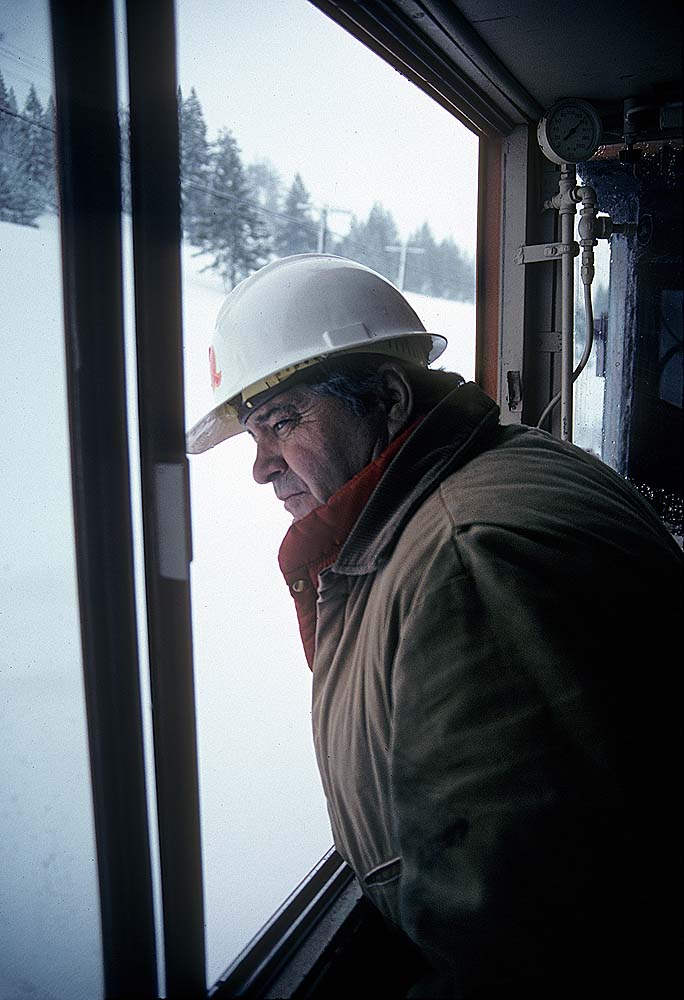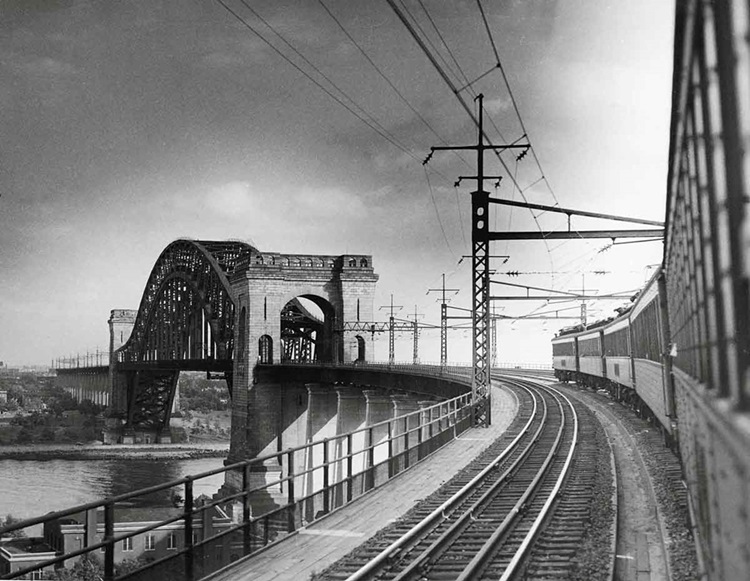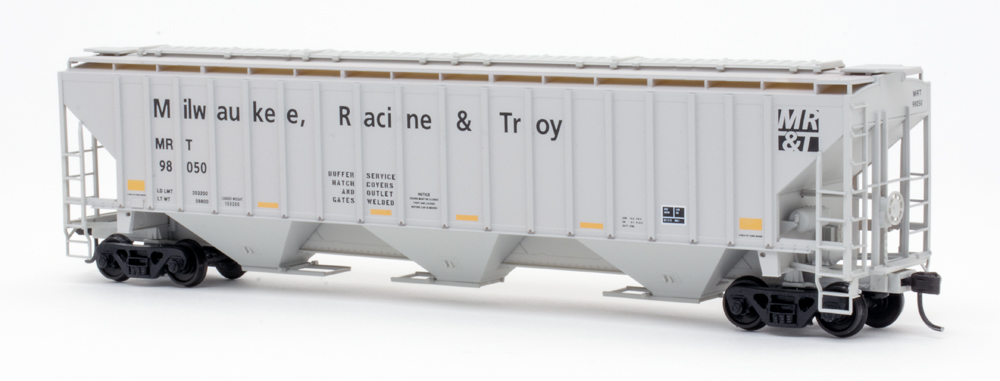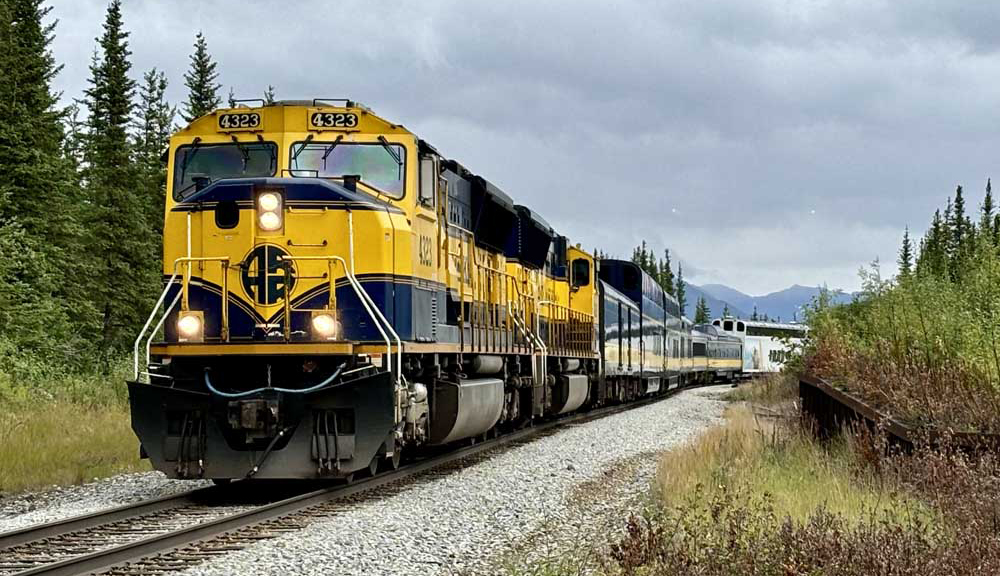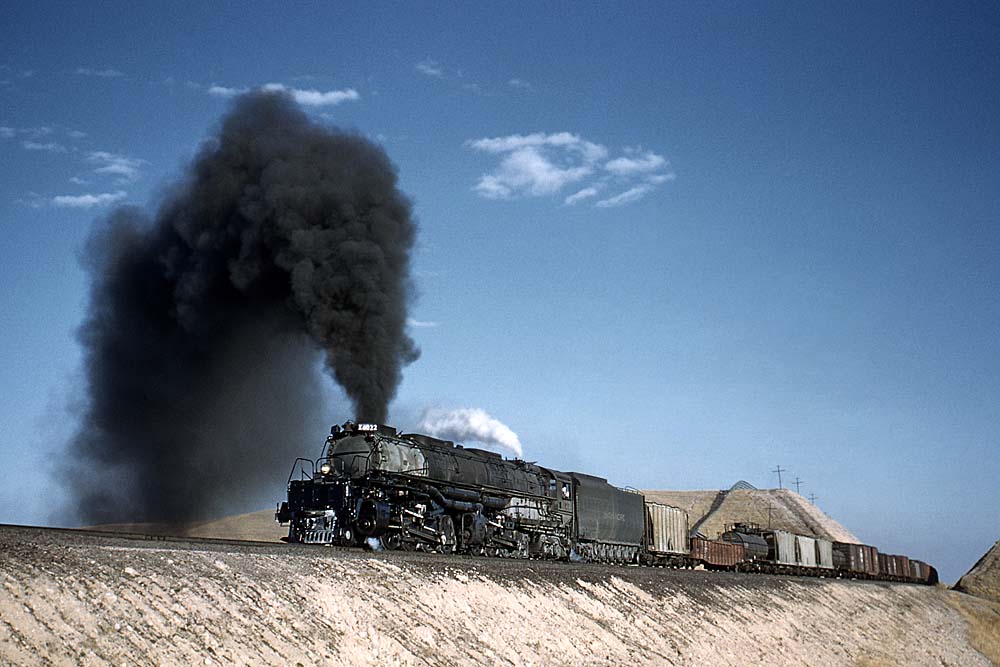
The new Sherman Hill line in 1953 was Union Pacific’s latest improvement over the massive undertaking of building and maintaining a transcontinental railroad begun about 90 years earlier.
Since the first surveyors ventured into the uplands west of Cheyenne in 1865, the Union Pacific has been waging intermittent war against the geography of southeastern Wyoming. Several times it has skirmished among the hills and along the creeks, trying to win a grade through the Laramie Mountains that best combined the virtues of economical construction and efficient operation. Each sortie with the construction tools of the day has brought improvements, but until this year of 1953 Sherman Hill has stood formidably in the way.
The 8,014-foot summit at Sherman has been the highest point on the main line and the toughest to reach with a heavy train. But now today’s construction forces — using earth-moving machinery that would astound and probably frighten the shovel-and-wheelbarrow laborers who built the Union Pacific through this country — have put a new battle line around and below Sherman. They have whittled significant percentages off the ruling grade with the largest line-change project in UP history.
The new line, which is 42½ miles long, begins about a mile west of Tower A at Cheyenne, where the long freights come out of the yard with the exhausts of their mammoth articulateds — 2-8-8-0s, 4-6-6-4 Challengers, and the mighty 4-8-8-4 Big Boys — exploding in a frightful cannonade. It meanders in sweeping loops through the bald hills of Laramie County, drops to within a quarter mile of the Colorado state line, and then cuts through solid rock and decomposed granite to Dale — formerly Dale Creek — where it rejoins the former alignment.
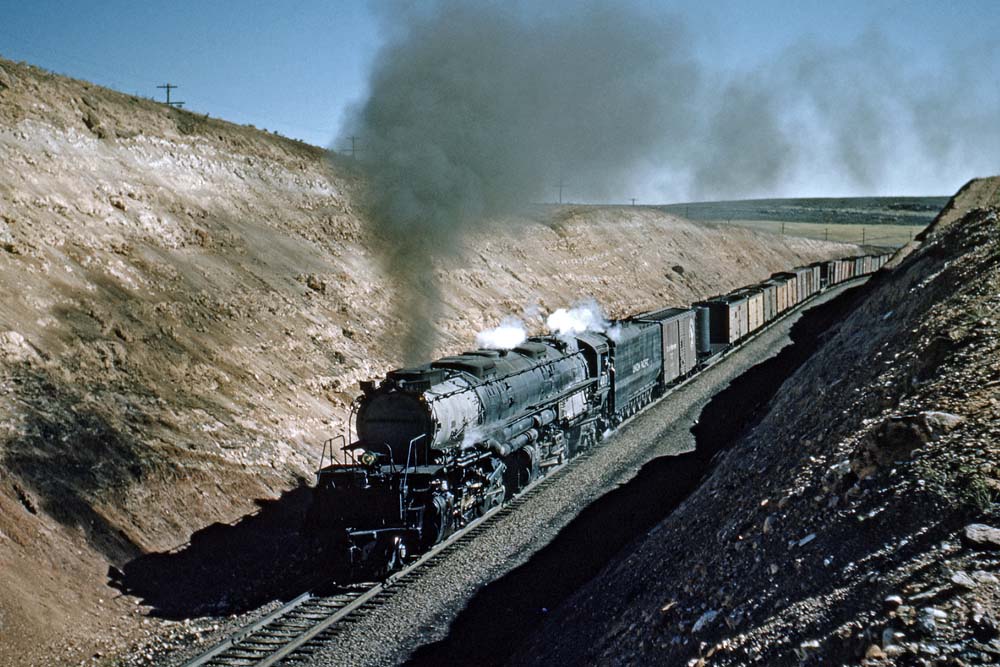
The meandering is for a definite reason. Added length — 9 miles of it — compared to the old line means a reduced ruling grade. On the new line it’s 0.82 percent; on the old, 1.55. The difference is money in the bank for the UP in the form of reduced operating costs.
Beginning in spring 1951, surveying parties explored the Laramie Mountains to find a new route that would chop the top off the only westbound grade of more than 0.82 percent between Omaha and Ogden. The bulldozers, rock shovels, and scrapers of Morrison-Knudsen Construction Co. began revising the landscape on February 18, 1952. The men and their machines dug, scraped, and blasted. They threw a fill 112 feet high across Sand Creek, one 157 feet high across Texas Creek, and dug a cut 110 feet deep through solid rock. They handled more than 7 million cubic yards of earth and rock.
Almost exactly a year from the day grading started — and six months ahead of schedule — the last rail went into place on the new Sherman Hill line.
The $16 million line change is as modern as then-current practices could make it. New 133-pound rail was spiked to treated ties. Passing tracks 7,200-feet long named for Morrison-Knudsen (Emkay), UP Operating Vice-President Perry J. Lynch, UP Chairman E. Roland Harriman, and UP Chief Engineer William C. Perkins have No. 14 turnouts. Cuts are 40 feet wide at the bottom. Steam locomotives could get coal and water at Harriman. Trains move under centralized traffic control.
The new line around Sherman Hill doesn’t mean the old route was abandoned. Eastbound freights and east- and westbound passenger trains continued to go that way. Westbound freights took the new line, which was engineered to reduce running time 15 minutes even though it is 9 miles longer.
The idea of having no grade on its westbound track greater than 0.82 percent has long been a fond one to the Union Pacific — since before there were the tools to do the job. But since May 12, 1953, when the latest assault on the Laramie Mountains was officially completed and the newest Sherman Hill line was opened for business, that dream has been a reality.
Trains.com members can enjoy more Sherman Hill steam action in the video Big Boys on Sherman Hill, 1958-1959.
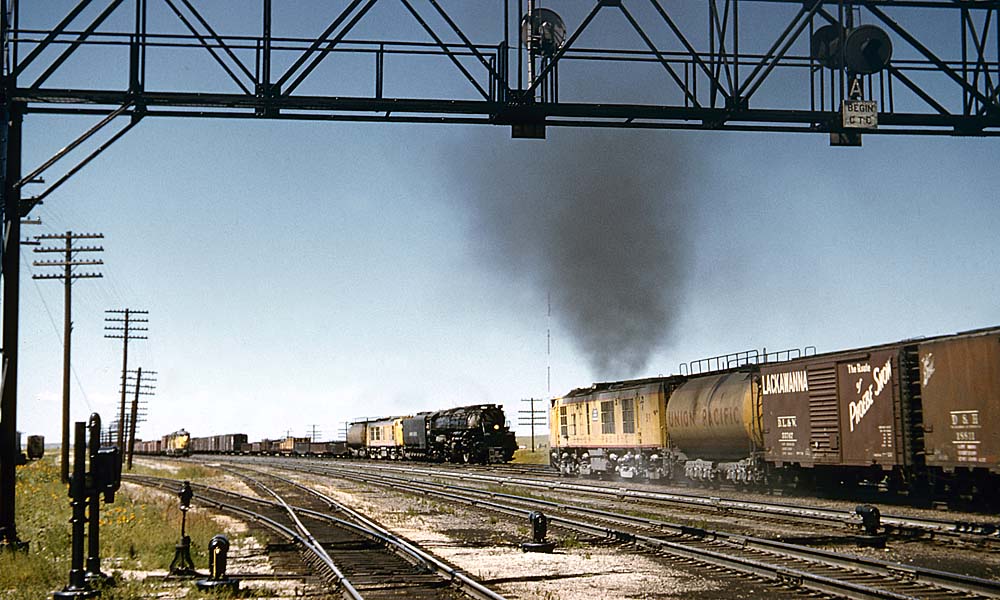
WALLACE W. ABBEY, a prolific rail journalist, author, and photographer, was a member of the Trains staff during 1950–54, then moved on to positions in railroad public relations. He died in 2014.






